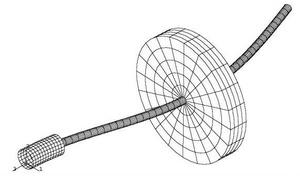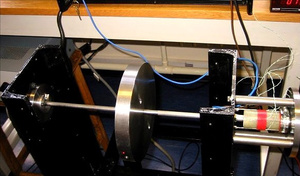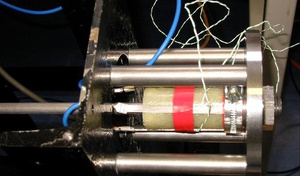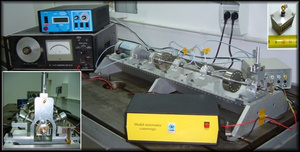Multi-functional materials in active control of structures
Main research group: Prof. W. Ostachowicz, Dr A. Zak, Ms K. Majewska
The main objective of the research in the area of intelligent materials - "thermal" shape memory alloys as well as magnetic shape memory materials - is the development of new methods and tools leading to new applications of these materials in active control of vibration and shape of structural elements. Also some research has been continued and carried out on the modelling of the martensitic transformation, i.e. the improvement of the existing 1D phenomenological models and the development of a new 3D model of the martensitic transformation. This is because most of the martensitic transformation models presented and available in the literature are well suited for the "pseudoelastic" behaviour only, but they are inaccurate in the case of the shape memory effect, or are usable only under certain conditions.
Intensive investigation has been carried out in the area of static and dynamic analysis of composite elements of structures (such as beams and plates) integrated with active elements made out of shape memory materials (Nitinol wires). This work has been focussed on the optimal selection of the position, location, orientation, and the relative volume fraction of the shape memory active elements within the structures. Also some interesting results have been obtained when the use of shape memory materials has been studied for active vibration and shape control of structural elements. Vibration of composite beams with shape memory alloy strips (Nitinol), as well as of a rotor with an active bearing support, have been all investigated numerically and experimentally - numerically by the use of the finite element method and experimentally on a special dedicated test rig. The numerical and experimental results point towards numerous applications for shape memory materials for active control of certain static and dynamic characteristics of structural elements, but on the other hand show also the limitations of their use and some significant disadvantages.
FEM mesh of a rotor with a SMA active bearing support
(in collaboration with the Dynamics Group of the University of Glasgow)
Rotor rig with a SMA active bearing support
(in collaboration with the Dynamics Group of the University of Glasgow)
SMA active bearing support of a rotor
(in collaboration with the Dynamics Group of the University of Glasgow)
Rotor with MSMA based active bearing





















